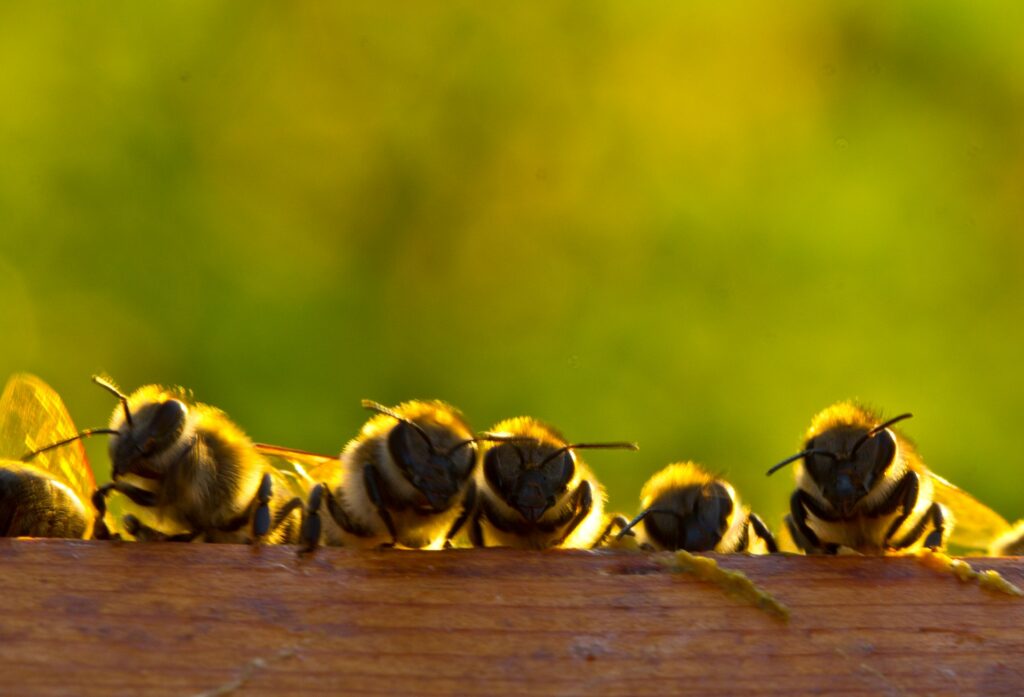Research Proving Bees Make Choices and Deserve Better Treatment

Lately, it seems bees are making headlines on the internet almost daily. New research data regarding pollinators, bee catastrophes averted on tarmacs, and declining populations bring the bee’s relevance front and center.
Recent studies found bees can feel pain and make choices on how much discomfort to endure, depending on the reward. In a study, bees took some pain levels to get a higher fructose mixture. The more elevated sugar was appealing enough to cause them to choose to stay when they could leave whenever they wanted for lower sugar. A bee’s ability to feel discomfort and make choices about pain trade-off for food has led to an active effort by advocates.
Bee activists are seeking protection under the Animal Welfare Act of 2022. At this point, bees and other insects are not included in the Act. However, the California Endangered Species Act recently added four bumblebee species to the list, setting the stage for additional protection efforts. Researchers believe the decline in bee populations is much more dire than initially thought. The push is for insects to be protected from inhumane treatment during research. Many argue that if we know bees can feel pain, shouldn’t we do what we can to NOT intentionally cause it, as we are required to do with other animals?
Learning About Bee’s Choices
The bees that were involved in the choice study were bumblebees. These bumblebees were given two options for food: one higher sugar level syrup heated up through a heating pad it sat on, and the other lower sugar level syrup with no heat. Surprisingly, to some, most of the bees in the study chose the heated fructose mixture even though it was unpleasant for the bees. The bees decided to stay on the heated pad because the reward for the higher fructose outweighed their decision to remove themselves from the discomfort. The response is similar to other studies and findings with rodents and primates. As far as scientific research goes, studies are meant to show what is likely happening in the wild. So, researchers conclude bees are willing to make sacrifices of comfort and deal with pain if they can receive a significant benefit from the source of their hive. Bees and other animals choose the pain if the reward is high enough.
This parallel between bees and other protected animals in their choice response to pain is causing researchers to ask for more. They seek more humane treatment of insects in research and inclusion of bees and insects in protective measures that apply to other animals. The findings of bees feeling pain and making choices have launched new pleas from other bee enthusiasts to protect insects and other bees during research, testing, and protection from the public. Animal scientists claim this research shows that arthropods, including other insects and spiders, can also make trade-off decisions.
Until now, bees have not been protected from thoughtless testing tactics, but now that researchers have evidence of their ability to feel, it could change how research is done on bees and other insects.
The Demand for Bee Protection is Growing
There are many factors for a growing need to protect bees, and the latest research is undoubtedly a contributing one. The estimate is that at least a quarter of all bee species are endangered with a growing threat. There is a significant risk to biodiversity if pollinator numbers continue to decline. People are taking action, including scientists, beekeepers, environmentalists, and the general public. Communication is free flowing in sharing information among these groups, and awareness of bees’ relevance to our ecosystem is rising. Many people have chosen beekeeping to help, and others consciously choose bee-friendly flowers in their home gardens. The key word here is conscious. If everyone made a conscious effort in the way we treat bees, the impact could be significant. Help a struggling bee out of the pool. Have a professional relocate a bothersome hive from your property instead of mindlessly wrecking it. Open the window to let a bee back outside your car or home without killing it with a deadly swat. Small things can go a long way. There are also bee-saving guides and kits for anyone wanting to make a family fun activity out of helping the bees.
The bee enthusiasts are coming together to help the bees survive against the adverse effects of urban development and pesticide use on crops and private properties.
Discoveries of bees feeling pain and other current and ongoing research efforts worldwide reveal bees more closely resembling other animals in their behaviors and tendencies. All this makes bees prime contestants for an expanded ethical treatment and protection framework. Now, the world watches as the paradigm shifts from critical insects being disposable to worth saving.
